iPhone XS Review
iPhone XS Review
Is the iPhone XS worthy of your cash?
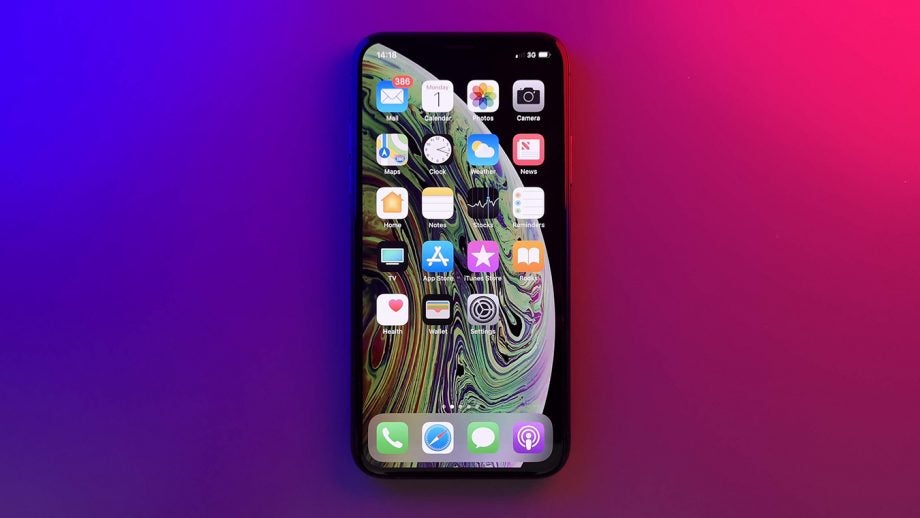
Sections
- Page 1 iPhone XS Review
- Page 2 Camera Review
- Page 3 Battery Life and Verdict Review
Verdict
Not a huge upgrade over the iPhone X, but a good choice if you're stuck on an older iPhone and fancy something new.
Pros
- Top-notch performance
- Phenomenal cameras
- Outstanding display
- Attractive design
Cons
- Hard to spot some of Apple's improvements
- Starting price is far too high
- No fast charger in-box
- Scratches easily
Key Specifications
- Review Price: £999
- 5.8-inch HDR OLED display
- Apple A12 Bionic processor
- 4GB RAM
- 64GB/256GB/512GB (non-expandable)
- Dual 12-megapixel camera w/ Smart HDR and OIS
- Face ID
- IP68 certified
- Dual SIM (eSIM)
- Wireless charging support
Picking a new iPhone in 2018 is hard. There’s the iPhone XR at £749/$749 and then the two models of the iPhone XS. The regular iPhone XS, that’s the one we’re reviewing here, and then the larger iPhone XS Max.
The iPhone XS starts at £999/$999 (£1099/$1099 for the Max) and has a better screen, an extra camera and slightly more ‘premium’ design when compared to the iPhone XR.
Related: read our iPhone 12 review
It’s a very iterative update for Apple, but that’s hardly a surprise considering how much of a jump the iPhone X was. Is this phone good enough to force people against picking up an Android device like the Samsung Galaxy S10, Huawei P30 Pro or Google Pixel 3?
iPhone XS – Design
If you’ve seen the iPhone X then the iPhone XS steps in as a dead ringer. Last year the X showcased a bold new design compared to iPhones of old. Gone was the aluminium frame of its predecessors, replaced with a polished stainless steel alternative. The screen now reached the fringes of the phone’s front and a glass back facilitated the phone’s new wireless charging feature.
Related: Best smartphones
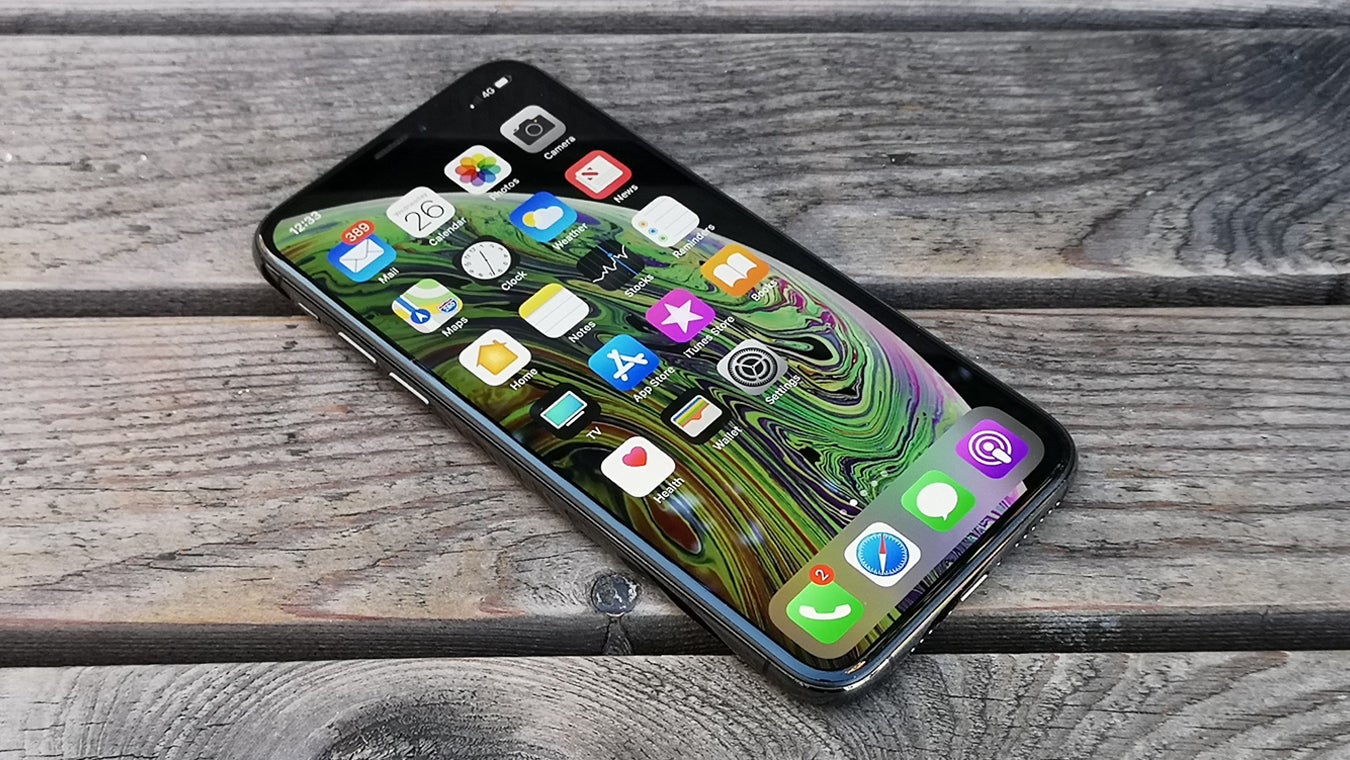
All of this fresh design DNA has been spliced onto the iPhone XS and I’m a fan, just as I was with last year’s phone. Some might have complained that the polished steel and glass form could have been made less slippery between generations but this is an issue I only really pin on this year’s larger iPhone XS Max.
- Read our Samsung Galaxy S10 review
The XS looks undeniably premium, sits comfortably in the hand thanks to the pillowed glass and rounded metal frame, and can still be considered one of the best-looking smartphones out there.
It’s fractionally heavier than its predecessor and just as with every glass-backed handset, holds onto fingerprints like nobody’s business, but this didn’t come as a shock to me and will only bother those who don’t plan on sticking it in a case.
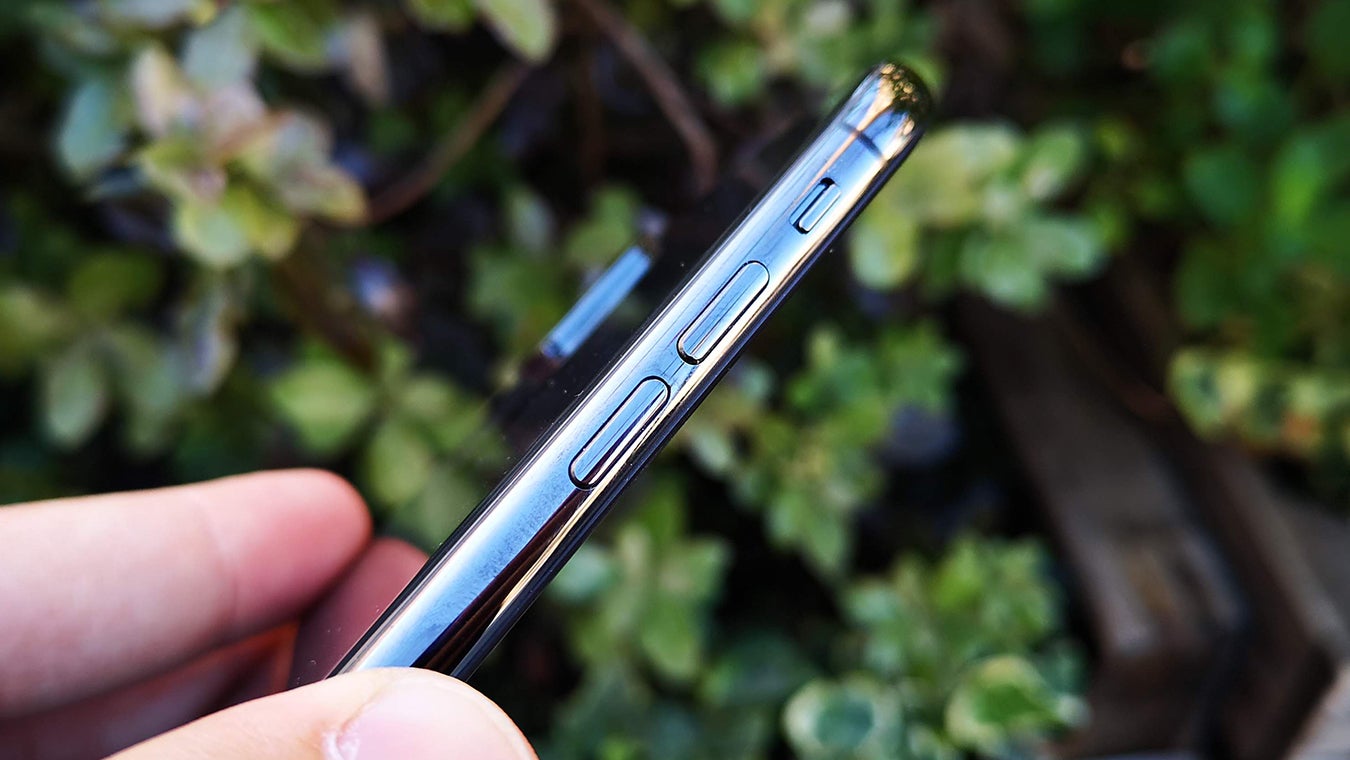
Related: Best iPhone XS cases
If you do plan on rocking the phone naked, firstly, you’re a braver soul than I, and secondly you’ll appreciate the option of the new gold colour, which extends to the iPhone XS Max too. Alongside the existing silver and Space Grey options from last year this new finish sports a shiny gold frame and a flat coloured back that I’d say is closer to a ‘warm peach’ than actual gold. It’s not to my taste but I can certainly see it being popular.
A small but nonetheless important upgrade is the iPhone XS’s IP68-certification (up from IP67 on last year’s iPhones). This means better protection against dust ingress and the phone is now happy in up to two metres of water for up to 30 minutes without springing a leak. Such an enhancement brings it in line with big rivals like the Samsung Galaxy S9 and Sony Xperia XZ3 and should provide more peace of mind to prospective owners too.
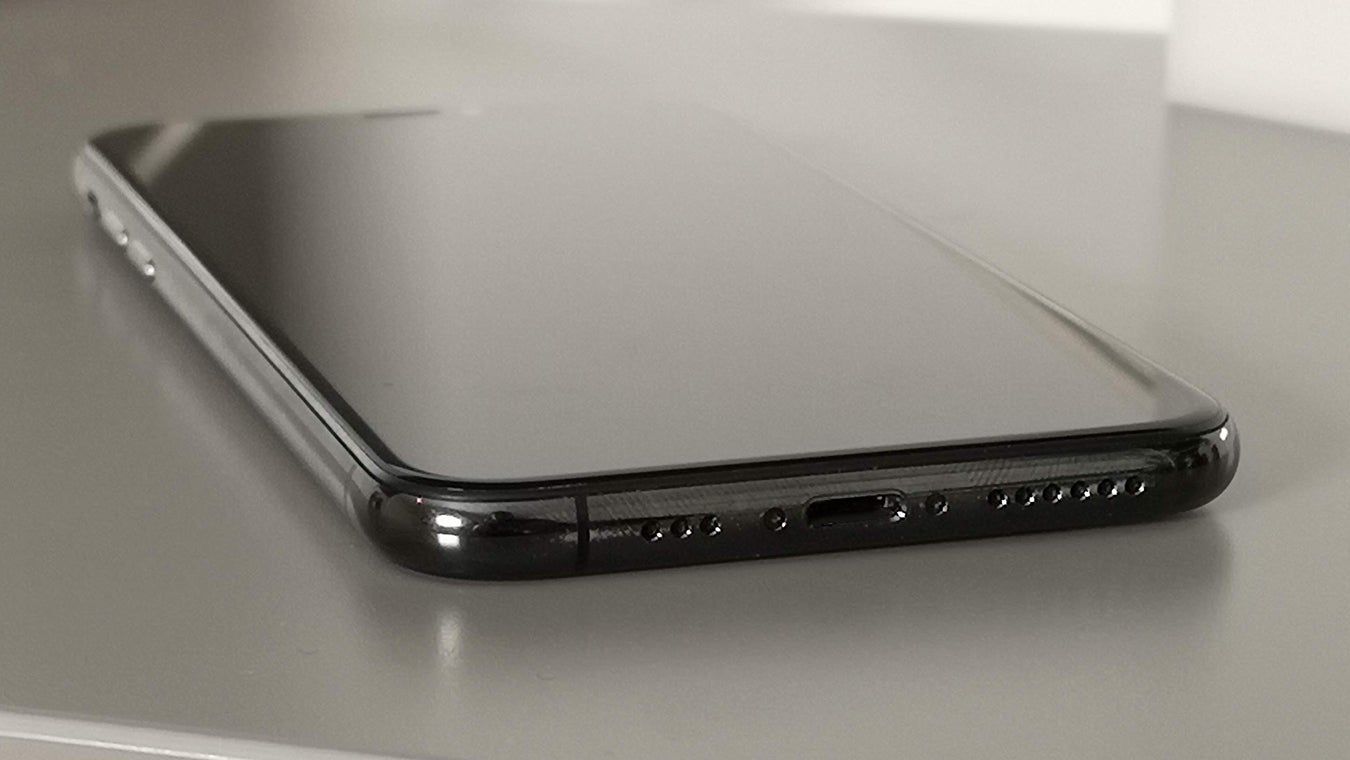
The headphone jack has been absent from iPhones for a few years now but previously Apple has at least had the courtesy to include a Lightning-to-3.5mm adapter in-box. With the iPhone XS, that trend stops.
Now, if you want to add a physical headphone jack onto this thing, you’ll have to pay Apple an extra £/$9 for the privilege; or find a cheaper (but importantly, supported) alternative elsewhere.
I hate the dongle nightmare that Apple tends to force on its customers and I’m lucky enough to own a pair of wireless Airpods, but for those who want to keep it wired, having to pay even more on top of this phone’s already steep price tag for something as trivial as a headphone jack is a low blow.
iPhone XS – Screen
The iPhone XS sports a stunning display, practically unchanged from the one on last year’s top iPhone, and that’s no bad thing. It almost reaches to the edge of the phone’s front, packs rounded corners and a notch.
A rarity when the iPhone X launched, the notch was one of the handset’s biggest talking points and it unapologetically makes a return here. Almost as wide as the screen itself, the notch plays host to Apple’s own TrueDepth sensor technology, along with the phone’s front-facing camera.
Related: read the latest about the upcoming iPhone 11
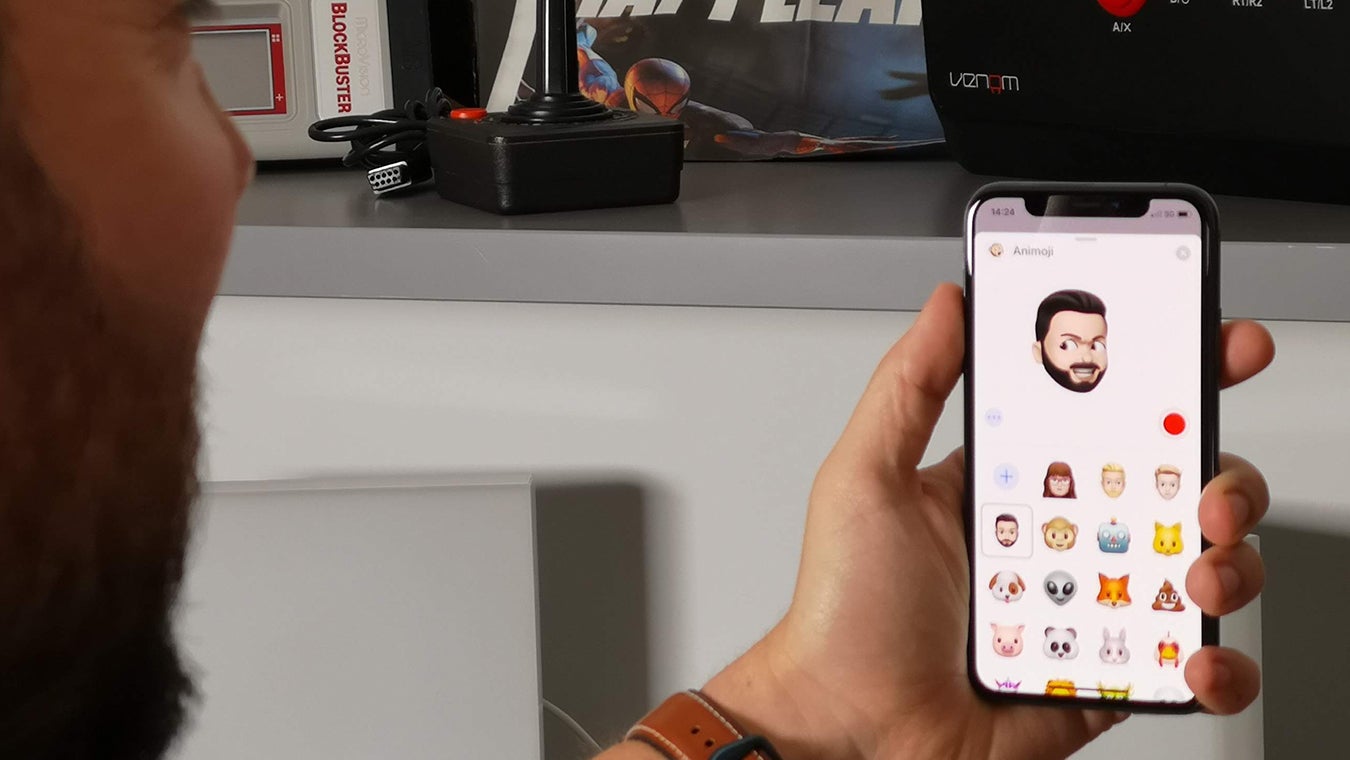
With so many alternatives now sporting a notch of their own, its appearance on the iPhone XS seems far less jarring than it was a year ago and while Apple’s notch is still one of the biggest out there, I’m far more comfortable with its presence than I was on the iPhone X.
It also serves a dual purpose, offering (fractionally) faster Face ID face unlocking than last year’s phone, and a means of tracking your facial expressions when using Animoji and the new Memoji feature built into iOS 12. This lets you create your own visage in Animoji’s same cartoony 3D style to insert into messages or overlay onto your own face in recordings. Fun? Undoubtedly, but the feature will only hold your interest for so long, like a Nintendo Wii or fidget spinners.
As for the panel of pixels beneath the notch, it’s a thing of real beauty – quite possibly the best smartphone screen out there right now.
Dubbed a ‘Super Retina Display’, the iPhone XS’s OLED panel is seemingly unaltered from the one found on last year’s phone. You again have an 1125 x 2436 resolution, 19.5:9 aspect ratio display that boasts up to 625 nits (according to Apple) of brightness and therefore competently supports both HDR10 and Dolby Vision HDR standards, as well as the full DCI-P3 wide colour space.
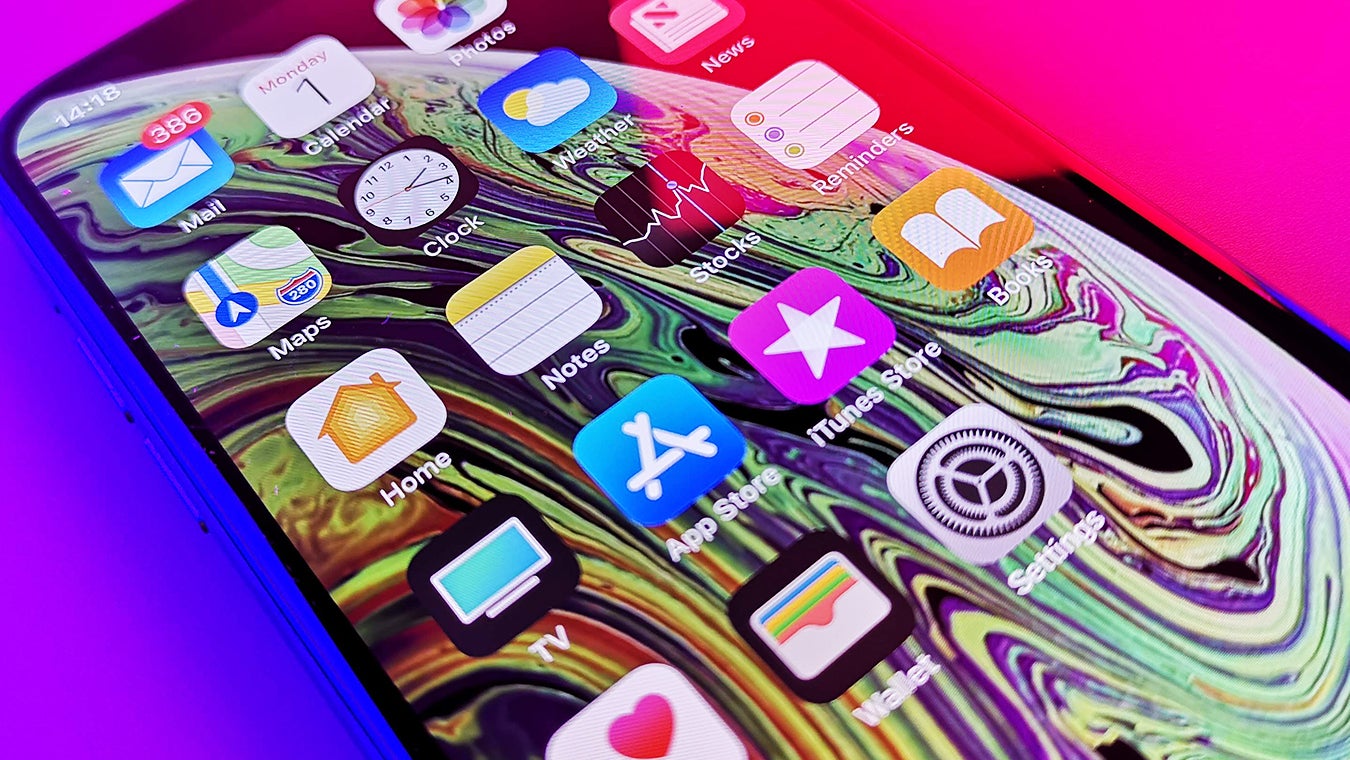
On paper, the 458ppi pixel density is below that of its Android flagship rivals but in real-world use, you’ll forgive this one shortcoming as content still looks so good. Whether you’re scrolling through Instagram or watching high dynamic-range content on supported apps like Netflix or YouTube, as I’ve already said, this is one of the nicest smartphone displays available right now.
If you want more pixels then most rivals, such as the LG G7, will bring something to the table and if you want more of the same, the iPhone XS Max features all the same strengths at a larger 6.5-inch size, with an extended Full HD+ resolution in tow too.
Apple’s TrueTone technology is also on hand to offer automatic colour temperature adjustment and there’s Night Shift to filter out disruptive blue light in the evenings, but unlike most other handsets nowadays, the XS forgoes any form of manual colour calibration, so make sure you’re happy with the out-of-box look, because that’s pretty much all you’ve got to work with.
iPhone XS – Performance
Huawei was keen to shout about its new Kirin 980 processor; the first mobile chipset announced to utilise an impressively small 7nm manufacturing process, however, Apple is the first company to get a 7nm chip onto a market-ready device in the form of its new A12 Bionic SoC.
It’s what powers the iPhone XS, XS Max and the upcoming iPhone XR, and it is an absolute beast. Unlike previous years, where ‘plus’ model iPhones have benefitted from additional oomph in the form of more memory, this year both the iPhone XS and XS Max enjoy the same 4GB; meaning performance is near-enough equal between the two.
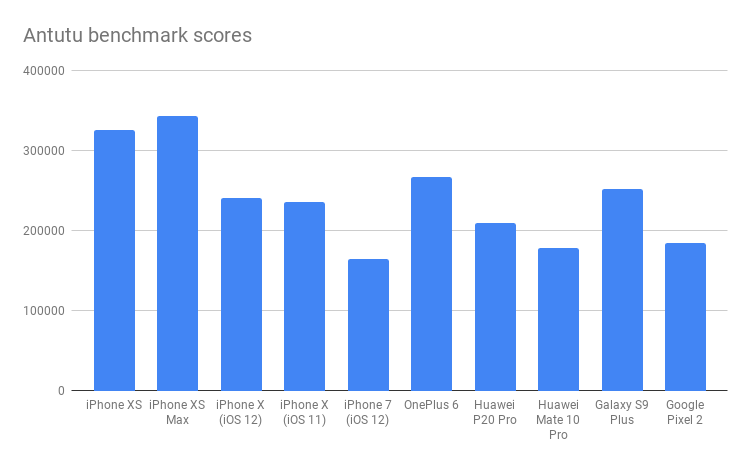
Apple’s official line highlights that the A12 offers a 15% CPU performance increase over last year’s A11 Bionic chip and brings a 50% boost to graphical performance on top of that. There’s also a beefier neural engine for AI-related tasks (like image post-processing) toting more cores and a few other benefits such as Gigabit-class LTE (think faster web browsing and video streaming).
As is often the case with new iPhone processors, it’s effectively too early to really reap the benefits of the A12’s extra grunt, at least until developers create more demanding apps in the coming months. In the meantime, the only discernible differences over iPhone X and its A11 chip are in mildly reduced app-load times and (as mentioned earlier) fractionally faster Face ID unlocking.
Benchmarking also confirmed my suspicions that the A12 was a solid performer through and through, trumping every previous A-series chipset and most of the other big players from 2018’s flagship smartphone contingent.
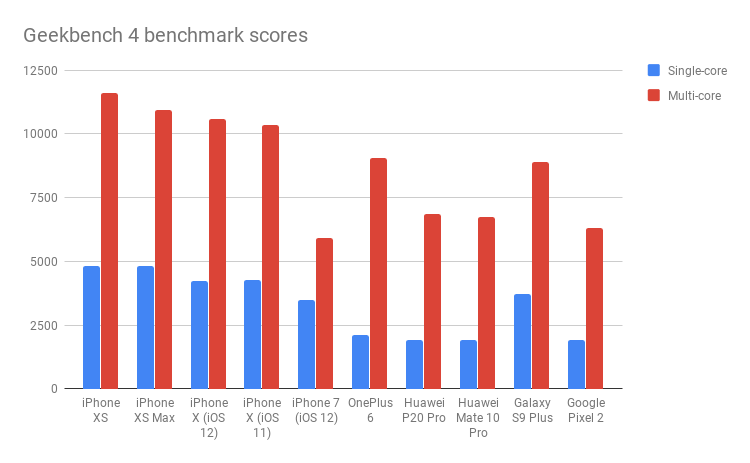
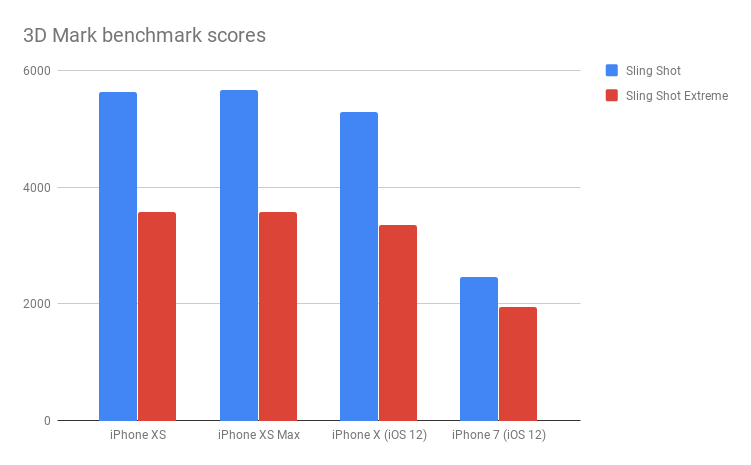
Another feature that Apple said it worked to improve in the move from X to XS was the phone’s loudspeaker setup. The iPhone X offered stereo with its earpiece working in tandem with the downward-facing loudspeaker, but it was essentially just upping the volume, resulting in a louder, tinnier sound.
Apple has supposedly balanced things out this time around using a more robust speaker in the earpiece that more closely matches that of the existing loudspeaker at the bottom of the phone. I’d argue that the promise of a wider soundstage is markedly less pronounced on the iPhone XS compared to the XS Max, but I will concede that the sound out of that earpiece is both clearer and richer than it was before when enjoying media and when taking calls, even if the difference is only slight.
Related: Best iPhone 2019
iPhone XS – Software
iOS 12 – the newest iteration of Apple’s mobile operating system – landed just a few days ahead of the iPhone XS hitting store shelves and as such, is the software experience that all of Apple’s latest iPhones run out of the box.
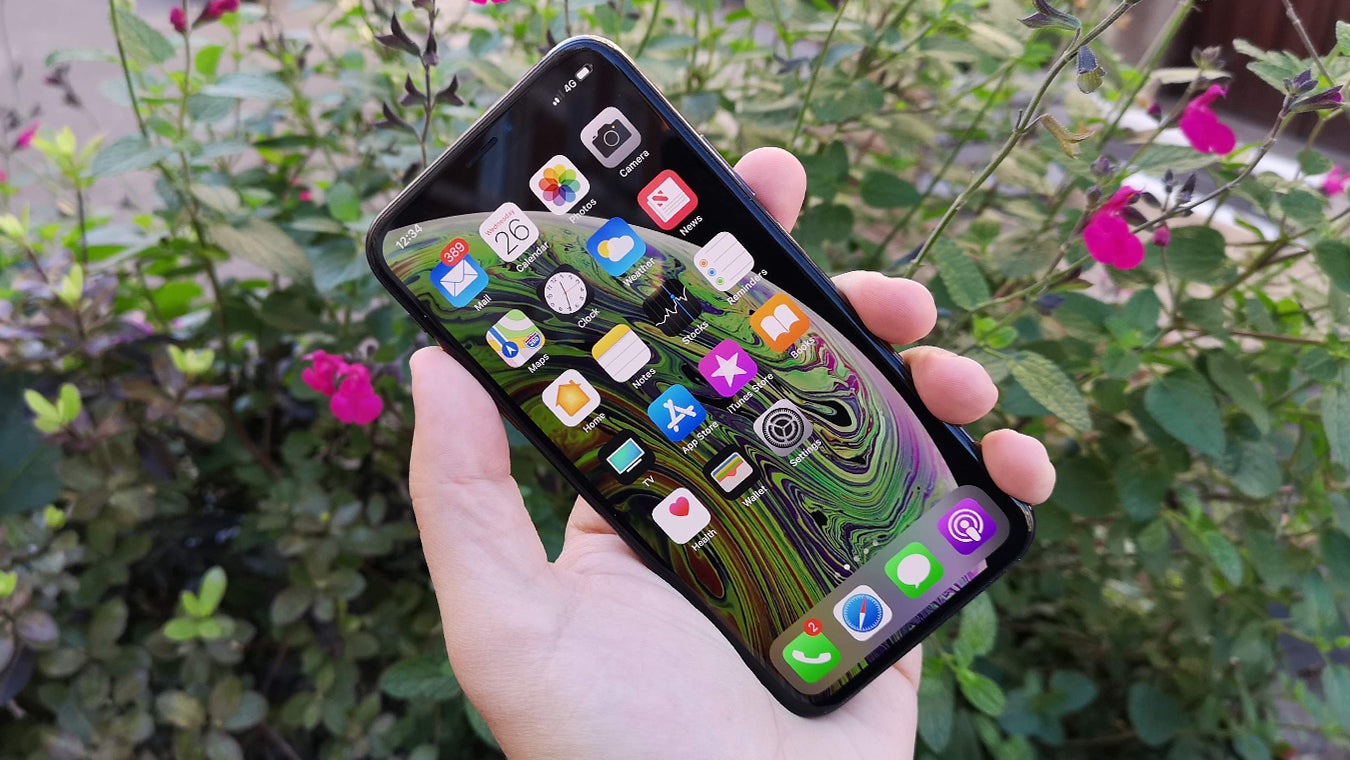
Notifications and how iOS handles them has long been an annoyance for many iPhone users, myself included. Placing individual notifications in a chronological timeline running down the lock screen isn’t ideal, especially when it skips and jumps between the various apps vying for attention.
With iOS 12, notifications are now grouped by app and it makes managing them so much easier. I found myself taking particular delight in dismissing a stack of Instagram notifications in a single go and what’s more, the ability to silence notifications from specific apps directly on the lock screen is another great enhancement.
Screen Time is part of the company’s efforts to improve your ‘digital wellbeing’, monitoring how much time and where your attention is spent whilst using your iPhone. At the end of each week, it spits out a report to help you identify any unhealthy usage habits you might have picked up.
I used this feature to lock off social media apps after 6pm each night and it’s undoubtedly proven its worth.
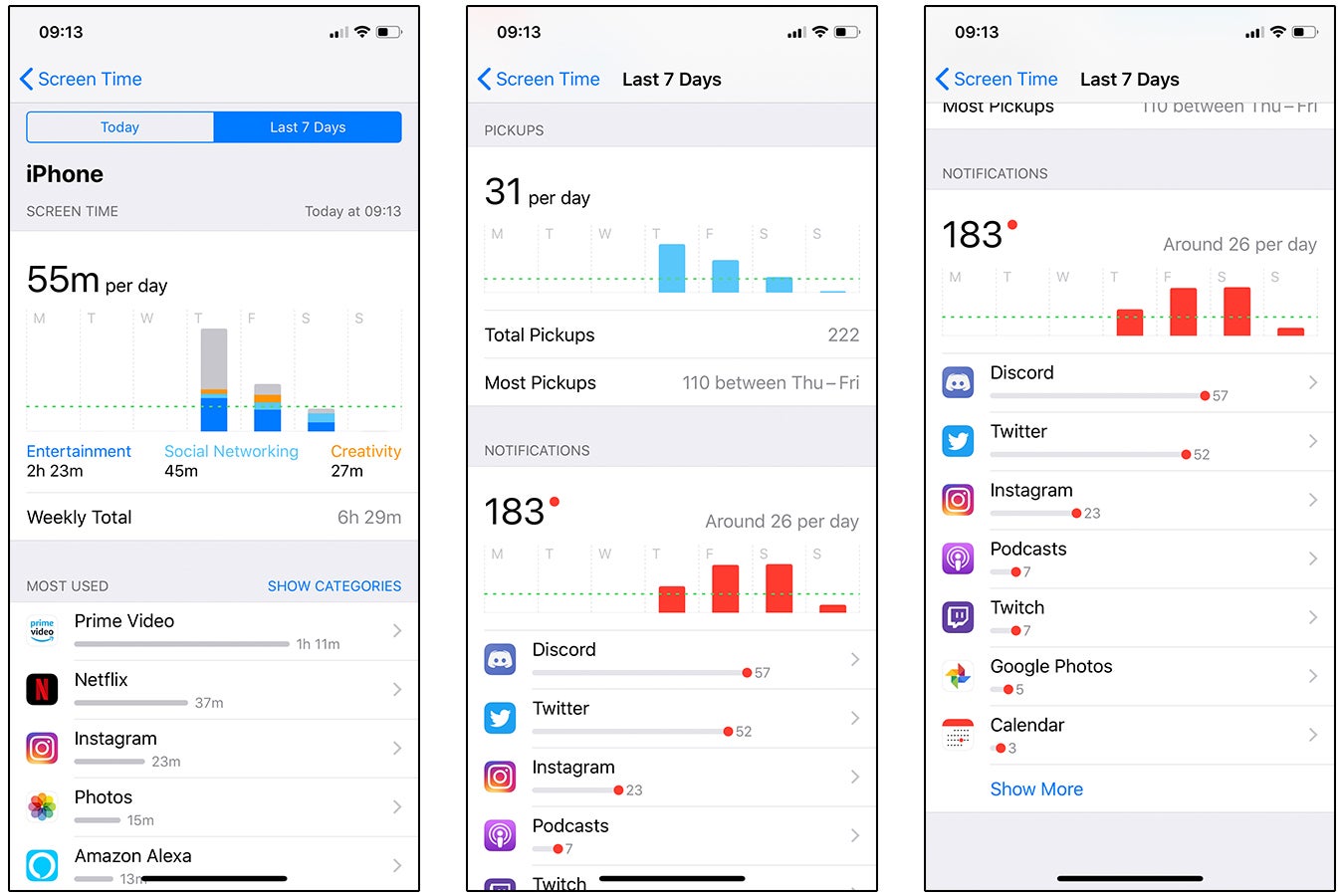
Screen Time shows a weekly breakdown of your usage
While I didn’t make use of this feature all that much, Siri Shortcuts (born out of Apple’s acquisition of automation app Workflow) adds a host of functionality to the company’s digital assistant. It doesn’t really elevate Siri’s overall intelligence, which is still lacking when compared to the likes of Google’s offering, but it’s closer in styling to Amazon Alexa’s Skills.
As the list of apps that support Siri Shortcuts grows, the feature will become far more powerful, but right now functionality still feels limited outside of Apple’s own first-party applications.
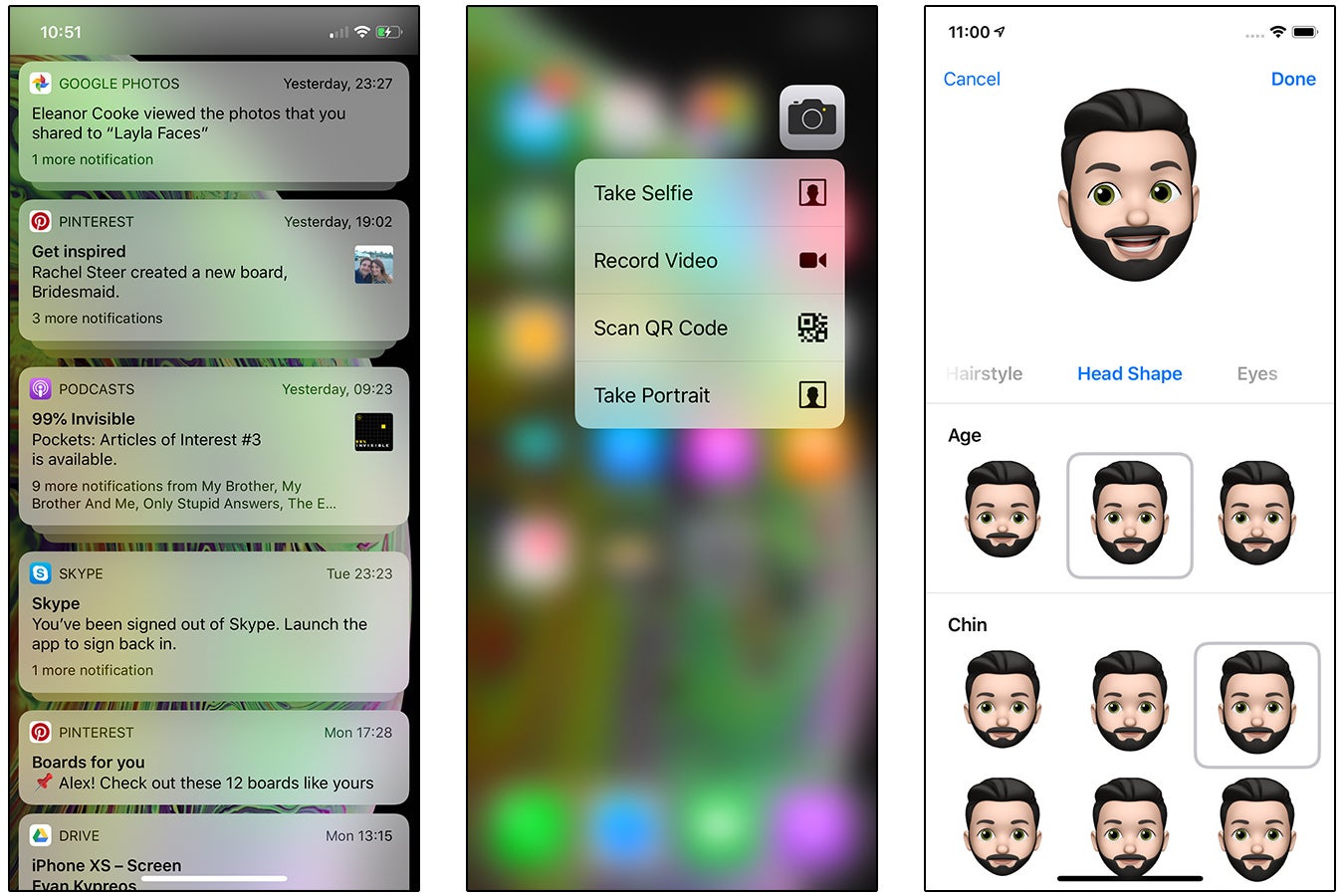
Related: Google Assistant vs Amazon Alexa
Beyond these new features, one key aspect of the iOS experience that still needs work is interaction. Like the notch, I’ve grown accustomed to how to get around iOS on iPhones with extended displays, such as the iPhone X and XS, but it still feels rather unintuitive.
Long-time users of any iPhone older than the X may wonder why Notifications Centre and Control Centre both rely on a top-down swipe to be summoned and I honestly can’t tell you. It’s awkward enough having to stretch your hand to the top of the XS’s extended display when using it one-handed, but then having to reach even further to get at a separate feature leaves you with a high chance of dropping the thing. The problem is even more pronounced on the larger XS Max.
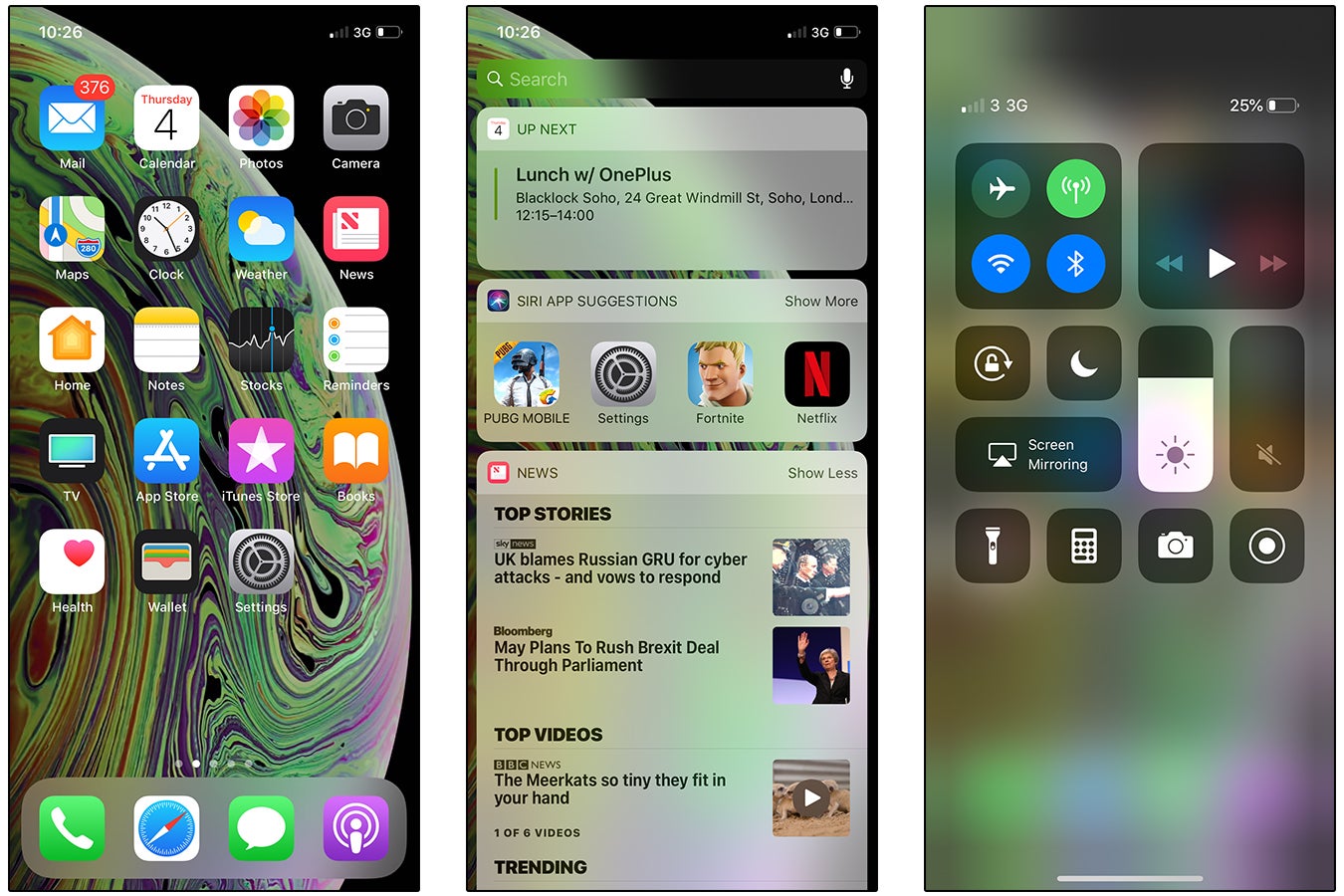
Swiping Control Centre up from the bottom, either side of the on-screen home bar, would have made a lot more sense and made for a more seamless transition for users moving between older and newer iPhones like the XS.
The rest of the gestures unquestionably take some getting used to but require fewer brain gymnastics, and if you’re new to iPhones in general, the Tips app is on-hand to educate you on the nuances of the phone’s virtual home bar 3D Touch and some of the other interaction quirks I’ve mentioned.
Since it was released the iPhone XS has been updated to iOS 12.1 This update introduces Group FaceTime, Dual SIM support and a load more emojis.
How we test phones
We test every mobile phone we review thoroughly. We use industry standard tests to compare features properly and we use the phone as our main device over the review period. We’ll always tell you what we find and we never, ever, accept money to review a product.


